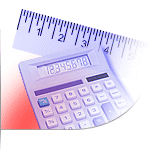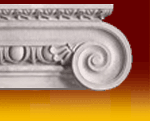|
One of the great things about the Internet is that miniaturists get to share the hobby, ideas, projects, etc with friends
around the world. But all miniaturists do not measure up equally -- lengths I mean. Some of us use the English
system, while others use the Metric. I hope that the information found on this page will lead you in your
conversion.
To learn more about the two measuring systems
and/or download a converter for your computer, please, visit:

English Customary Weights & Measures
Online Metric Calculators
Quick History of the Measuring Systems
According to historical findings and from Biblical references, early Egyptians
and Babylonians began using measures based on forearm, hand, and finger length. To measure volume, containers were filled
with plant seeds or stones, then those were counted to determine a standard measure of volume and weight. In the UK, many
people, still to this day, report their body weight in stones. Another unit that did not evolve is the "carat" which was originally
based on carob seeds, is still used as the mass unit to measure gems. As time progressed, different measurement systems emerged
(instead of one) due to limited international trade and communication.
Imperial
System (aka English System)
The system Americans
use today is nearly the same as the one brought to America by the English colonists - The very system originally stemming
from Babylonian, Egyptian, Roman, Anglo-Saxon, and Norman - French. So, the ancient "digit," "palm,","span," and "cubit" units
evolved into the "inch," "foot," and "yard."
Metric
System
During the French Revolution (1790), the French Academy of Sciences
estabished an invariable standard for all the measures and all the weights, and based the measures on the convenient units
of 10. France made the metric system compulsory in 1840 and many other countries have followed suit since.
Data was found on the following website:
For the more mathematically gifted wishing to figure out conversions on their own, here are some charts I hope will be
of help.
|
|
|
|
A unit of length equal to one twelfth of a foot -- 2.5cm (a metric
unit of measurement) is approximately an inch.
|
|
|
A linear unit of length equal to 12 inches or a third of a yard.
|
|
|
A unit of length equal to 3 feet; defined as 91.44 centimeters; originally taken
to be the average length of a stride.
|
|
|
A unit of length equal to 1760 yards.
|
|
|
|
|
(European spelling: millimetre) A metric unit of length equal to one thousandth of one
meter -- or 0.0394 inches.
|
|
|
(European spelling: centimetre) A metric unit of length equal to one hundreth of one meter.
-- 2.5cm is approximately an inch.
|
|
|
(European spelling: decimetre) a metric unit of length equal to one tenth of a meter.
|
|
|
(European spelling: metre) A metric unit of measure that equals 39.37 inches.
|
|
Kilometers
|
(European spelling: kilometre) One kilometer is equivalent to 1,000 meters or 0.62 miles.
|
|

